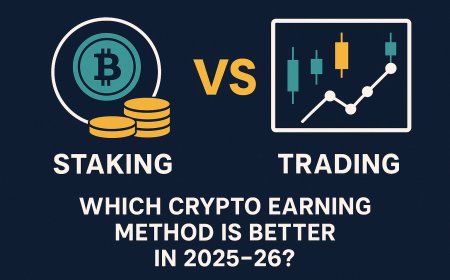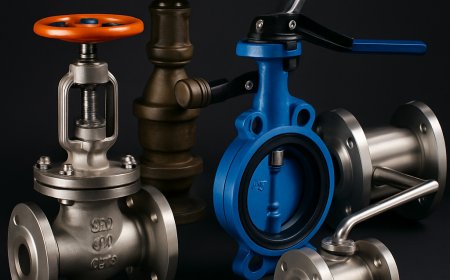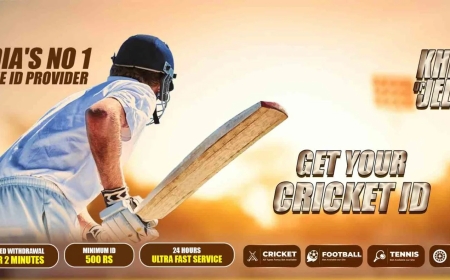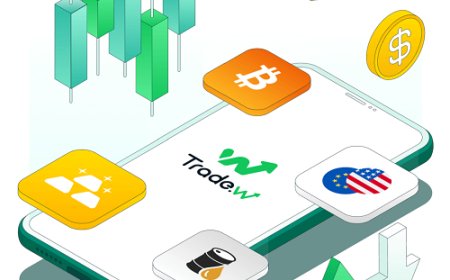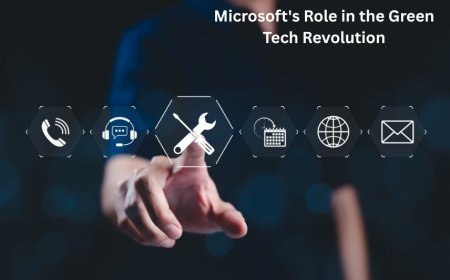How Healthcare Software Development Improves Data Security and Compliance?
Learn how healthcare software development improves data security and compliance with robust encryption, secure access controls, and regulatory adherence.
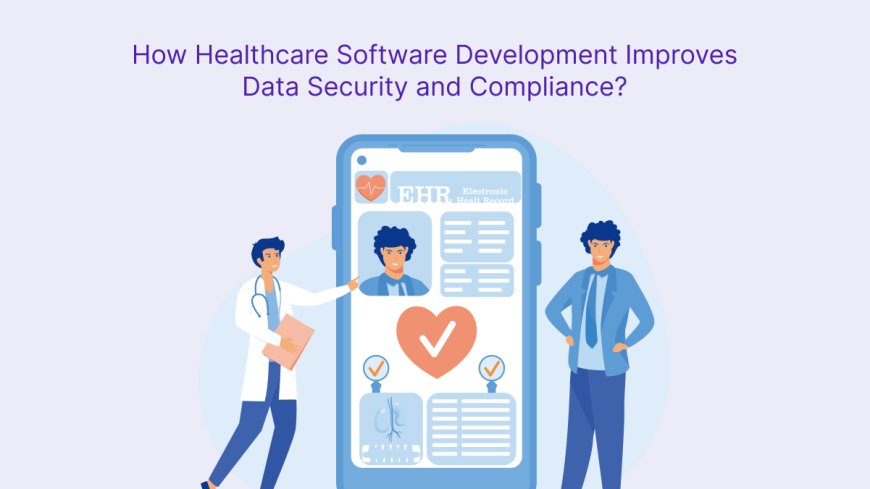
In todays digital healthcare environment, protecting patient data and maintaining regulatory compliance are two of the most critical responsibilities for healthcare providers. With the rise of electronic health records (EHRs), telemedicine platforms, remote monitoring tools, and mobile health apps, sensitive medical information is more exposed than ever. Thats why healthcare software development plays a crucial role in improving both data security and compliance in the industry.
Healthcare organizations rely heavily on custom-built or integrated software systems to manage patient records, scheduling, billing, diagnostics, and communication. But beyond these functionalities, these systems must also be designed to meet high security standards and follow government regulations that protect patient privacy. This blog explains how healthcare software development enhances data protection and ensures compliance in 2025.
The Importance of Data Security in Healthcare
Healthcare data is among the most sensitive types of personal information. It includes a persons medical history, treatments, prescriptions, allergies, lab reports, and even financial details. Any unauthorized access or data breach can lead to serious consequencesnot just financial losses, but also harm to a patient's well-being and trust.
Cyberattacks on hospitals and healthcare systems have become more frequent. Hackers often target these systems because many still rely on outdated security methods, and the stolen data can be used for fraud or identity theft. So, it's more important than ever for healthcare software developers to build systems that prioritize security from the ground up.
Understanding Compliance in Healthcare Software
Healthcare compliance refers to following laws, regulations, and standards designed to protect patient data and ensure ethical practices. The most recognized regulation in the United States is HIPAA (Health Insurance Portability and Accountability Act), which sets strict rules for how patient information should be handled.
Other regions have their own regulations, like GDPR in Europe or PIPEDA in Canada. Healthcare software must be designed to follow these standards or risk facing legal penalties and loss of reputation.
Compliance is not a one-time taskit requires continuous monitoring, regular audits, documentation, and system updates. Proper healthcare software development helps automate many of these processes and keeps organizations aligned with the law.
How Healthcare Software Development Enhances Data Security
1. Encrypted Data Storage and Transmission
Encryption is one of the most basic yet powerful ways to protect data. Healthcare software today is designed to encrypt data both at rest (when stored) and in transit (when sent over a network). This means even if data is intercepted by hackers, its unreadable without the correct decryption key.
Modern encryption algorithms such as AES (Advanced Encryption Standard) are commonly used in healthcare apps and databases to protect patient data from unauthorized access.
2. Role-Based Access Control (RBAC)
Not every staff member in a hospital or clinic needs access to every type of patient data. Software developers now use Role-Based Access Control to limit what users can view or edit based on their role.
For example, a nurse might only see basic medical history, while a doctor can view detailed records and test results. This layered access reduces the risk of internal data misuse or accidental exposure.
3. Multi-Factor Authentication (MFA)
Another key security improvement is implementing multi-factor authentication. This means users need to verify their identity in more than one wayusually through a password and a one-time code sent to a mobile device.
MFA adds an extra layer of security, especially for healthcare professionals accessing sensitive information outside the hospital network or through mobile apps.
4. Secure APIs for Data Integration
Healthcare systems need to exchange data with labs, pharmacies, insurance providers, and wearable devices. Developers build secure APIs (Application Programming Interfaces) that allow this data exchange while keeping it encrypted and protected from threats.
Using industry standards like HL7 and FHIR, developers ensure that data shared between systems is both compatible and secure.
5. Regular Software Updates and Patches
Even the most secure system can become vulnerable if its not updated regularly. Thats why developers create healthcare software with built-in update mechanisms. These updates often include patches for newly discovered vulnerabilities, helping keep the system secure over time.
Some systems also feature automated alerts or audit logs that notify administrators of unusual activity or login attempts.
Read more: A Complete Guide to Healthcare Software Development Services in 2025
How Software Development Supports Compliance
1. Automated Compliance Checks
Healthcare software now comes with built-in compliance features. For example, during data entry, the system may check for required consent forms or automatically log access to sensitive files. These features ensure that compliance is not left to manual processes, reducing the chance of human error.
2. Audit Trails and Logs
Maintaining an audit trail is a regulatory requirement under many compliance standards. Modern healthcare software records every user activitywho accessed what data, when, and what they did with it.
These logs are useful not only for audits but also for internal reviews or in case of suspected data misuse.
3. Consent Management Systems
Patient consent is at the heart of data privacy. Todays healthcare software includes modules for tracking patient consent in real time. Patients can grant or withdraw permission for data sharing, and the system ensures that their preferences are always respected.
This is especially important for sharing records with third parties like insurance companies or researchers.
4. Data Anonymization and Masking
In some cases, healthcare data is used for research or analytics. Developers use anonymization techniques to remove or hide personal identifiers so that data cannot be linked back to an individual.
This helps in using data for innovation and research without violating privacy laws.
5. Compliance Reporting Tools
Healthcare software can generate compliance reports that show how the organization is meeting regulatory requirements. These reports make it easier for administrators to prepare for external audits or respond to data requests from regulators.
Trends in Data Security and Compliance for 2025
1. AI-Driven Threat Detection
Artificial Intelligence is now being used in healthcare software to detect unusual behavior and identify potential threats. AI can flag suspicious login attempts or data access patterns, helping IT teams respond quickly to possible breaches.
2. Zero Trust Architecture
The Zero Trust model is becoming popular in healthcare systems. This approach assumes that no one, inside or outside the organization, can be trusted by default. Every access request is verified individually, improving overall security.
3. Blockchain for Health Data Integrity
Blockchain technology is being explored for managing health data. It creates a secure, tamper-proof ledger of data access and transactions. While still emerging, this trend shows promise in enhancing transparency and trust.
4. Cloud-Based Compliance Solutions
With more healthcare providers moving to the cloud, compliance tools are also becoming cloud-based. These tools offer centralized monitoring and reporting features, making it easier to manage multiple systems and locations from a single dashboard.
5. Continuous Compliance Monitoring
Rather than checking compliance only during audits, modern software continuously monitors systems to ensure they stay within regulatory boundaries. This reduces the risk of surprises during inspections or evaluations.
Challenges in Ensuring Security and Compliance
Despite all the advancements, several challenges remain:
- Legacy systems are hard to integrate and often lack modern security features
- Staff may not be trained in handling digital systems securely
- Third-party vendors and integrations can create security gaps
- Keeping up with changing regulations requires constant updates
- Cyberattacks are evolving and becoming more sophisticated
Addressing these issues requires a proactive approach, involving regular staff training, strong internal policies, and working with experienced developers.
The Role of Developers and IT Teams
Healthcare software developers are at the frontlines of building secure and compliant systems. Their responsibilities go beyond just writing codethey must understand healthcare workflows, data privacy laws, and cybersecurity principles.
Developers work closely with healthcare professionals to design user-friendly yet secure systems. They also collaborate with legal and compliance teams to ensure that the software meets both functional and legal requirements.
As a result, the development process includes a heavy focus on risk assessment, documentation, user authentication, and testing.
Conclusion
Data security and compliance are two pillars that support trust in the healthcare industry. With the growing use of digital platforms, protecting patient data and following strict regulations have become top priorities. Healthcare software development has made remarkable progress in this area by introducing advanced security technologies and integrating compliance features right into the core of applications.
From encryption and secure logins to audit trails and consent management, these features make sure that sensitive health data stays protected at all times. As regulations evolve and cyber threats grow, healthcare organizations must continue investing in secure software solutions. Partnering with a reliable app development company that understands both technology and healthcare regulations can ensure that systems remain robust, scalable, and legally sound for the future.
FAQs
How does healthcare software prevent unauthorized access to patient data?
Modern healthcare software uses security measures like encryption, multi-factor authentication, and role-based access controls to limit access and protect data from unauthorized users.
What is HIPAA compliance, and why is it important in healthcare software?
HIPAA is a U.S. law that sets rules for protecting patient health information. Healthcare software must follow HIPAA guidelines to ensure privacy and avoid legal penalties.
Can healthcare software track who accessed patient information?
Yes, most systems include audit logs that record who accessed what data and when. These logs help ensure transparency and support compliance during audits.
How is patient consent handled in modern healthcare systems?
Software solutions now include consent management features where patients can give or withdraw permissions for data sharing. This helps organizations respect patient privacy.
Is cloud-based healthcare software secure?
Yes, when properly developed, cloud-based software can be just as secure as on-premise systems. It includes encryption, regular updates, and access controls to keep data safe.









